Ki Sovoy 2025: The First Auto Pen?
by devadmin | September 11, 2025 9:13 pm
Raboyseyee and Ladies,
The First Auto Pen?
According to very informed sources, the first autopen — the machine that can reproduce a person’s exact signature automatically — was invented in the 1930s. Though its whole raison d’être is the signature, the autopen isn’t limited to just names. It can reproduce any fixed piece of handwriting or graphic that you feed it (as long as you have a template plate cut). That means short phrases, inscriptions, or even logos/doodles can be repeated. Modern digital autopens (much more advanced than the 1930s version) can reproduce longer texts, provided you pre-program them — though usually they’re still used for signatures and brief notes. Very interesting indeed, ober is it emes that it was first invented in the 1930’s? Is it possible that the Yiddin invented it and used it on the very day they crossed the Jordan River into Israel in the year 2488? We shall explore that below but let us begin here.
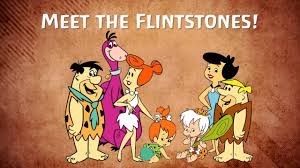
Long before we met Fred Flintstone and the entire mishpocho (Wilma and Barney Flintstone, along with their supporting family members, Barney, Betty and Bamm- Bamm Rubble), the entire show set in the Stone Age where Fred worked in the quarry, and avada most famous for his catchphrase – yabba dabba doo, in this week’s parsha, which predates the Flintstones by thousands of years, Moishe delivered instructions of what to do with some very large stones.
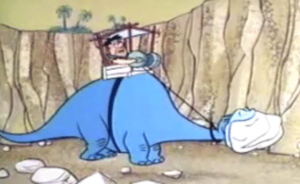
And while Parshas Ki Sovi is most well-known and perhaps most associated with the 98 different curses the RBSO has in mind to visit upon the Yiddin should (read: ‘when’) they stray -and avada, stray they did many times over the generations- as well as some very interesting ceremony known as Bikurim which the parsha leads with, this year we shall take a look at yet another set of instructions, a new stoney-line (pun intended) that precedes the very few rewards in store for good behavior and the aforementioned bad stuff designed to scare the crapola out of us.
Let’s meet the avonim (stones) and their role in our parsha, a most fascinating, but often overlooked, part of the heylige Toirah. Says the heylige Toirah (Devorim 27:1-8) that Moishe gives the Yiddin a detailed command about what to do when they cross the Jordan River into the Land:
- They are to take large stones (avanim gedolos).
- Coat them with lime/plaster (sidd).
- Write on them “kol divrei haToirah hazois” — “all the words of this Toirah.”
- Set them up on Har Eival and build an altar there.
- Offer korbanos, rejoice, and then declare the blessings and curses.
This is one of the last mitzvis given before Moishe’s passing and let’s read the detailed instructions in English only:
“Moishe and the elders of Israel charged the people, saying: Observe all the Instruction that I enjoin upon you this day. On the day that you cross the Jordan into the land that the Lord your G-d is giving you, you shall erect large stones and coat them with plaster. You shall inscribe upon them all the words of this Toirah when you cross over, so that you may enter the land that the Lord your G-d is giving you, a land flowing with milk and honey, as the Lord, the G-d of your fathers, promised you. Upon crossing the Jordan, you shall set up these stones about which I charge you this day, on Mount Eival, and coat them with plaster. There you shall build an altar to the Lord your G-d, an altar of stones. Do not wield an iron tool over them. You must build the altar of the Lord your G-d of unhewn stones. You shall offer on it burnt offerings to the Lord your G-d, and you shall sacrifice their offerings of well-being and eat them, rejoicing before the Lord your G-d. And on the stones, you shall inscribe all the words of this Toirah most distinctly.”
And now a few questions: What’s pshat “On the day you cross the Jordan…?” How large were the stones? Were they stones or boulders? How much did each one weigh? How many stones? Where did they come from? Who carried them? Who did the writing? What specifically was written? Where were they placed? Does everyone agree?
Of course, there are many opinions, and before we answer the questions, let us remember these facts: Long before Art Scroll envisioned the Stone Edition of the Chumash, stones of many varieties already played critical roles in the heylige Toirah. Between the heylige Toirah and the Novee, they are likely mentioned hundreds of times. Avada, we remember Yaakov taking a few stones and fashioning a pillow (Bereishis 28:11). One Perek later -same parsha- he used his might to roll a big one off the well. Shoin, one gains extra strength when one wants to impress a girl. Let’s not forget that the Ten Commandments came down on two tablets of stone. Avada we should shout out to Moishe, who got himself into a heap of trouble for hitting the stone rock.
As an aside, now is a good time to ask this: Are stones and rocks the same thing? Taka an interesting kasha and the answer is azoy: Yes and no! What’s pshat? It depends on context; grada we heard that word context from a certain college president who stood by idly while radical students were violently protesting and putting Jewish college students in harm’s way. Veyter.

Most people say “stone” for a smaller piece you can pick up, skip, or put in your pocket. “Rock” usually refers to a larger mass, a boulder, or something you can’t easily carry. The bottom line: Size matters; pebbles are not rocks, nor are stones. Rock is the scientific term, a naturally occurring solid aggregate of minerals, while stone is just a piece of rock. You can chop rock into stones. Limy nafka mina (what’s the difference for our parsha) you ask? Not much as Moishe specifically states to take large stones which could mean they were the size of large rocks. The bottom line: The heylige Toirah switches between “stone” (even) and “rock” (tzur) depending on the message. “Even” mostly refers to a physical object you can handle like stones for the choishen, stones for the altar. “Tzur” often has a symbolic sense—Hashem is our rock, fortress, strength. Big ideas, not things you carry. So when the RBSO told the Yiddin to pick up stones in our parsha, He meant “an even” or avonim (maybe manageable pieces), even if they were miraculously enormous. How enormous?
Our sages of the heylige Gemora (Soitah 34a) say that the stones were massive. How big is massive? Each stone was big enough that only a miracle allowed one man from each sheyvet to lift it onto his shoulder. Each was so heavy that it would normally take several men to carry one, but the RBSO gave them momentary super-strength.
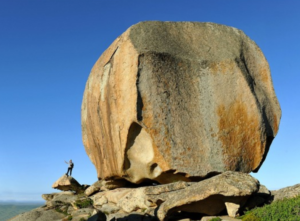
Whatever size they were, the stones were taken from the riverbed of the Jordan from the very place where the Kohanim stood holding the Aron while the waters stood miraculously still. This made the stones miracle-markers, and physical souvenirs of the great crossing. And to get the stones to their designated location set by Yehoshsua, each tribe sent one man, typically a nosi, (leader) to carry one stone out of the Jordan river. Want more color on this operation? Check out the heylige Novee (Yehoshua 4:4-5) which tells us this explicitly: Twelve men, one per tribe, carried the stones “on their shoulders.” The bottom line: These were not little pebbles but serious slabs — shoulder-carried and heavy.
The heylige Gemora (Soitah 34a) gives us some measurements for the stones being discussed. Says the Gemora azoy: Each stone was approximately 1 Amah × 1 Amah × 3 Amos. Converting that to modern terms: 1 Amah ≈ 48–60 cm (about 19–24 inches). So each stone was roughly 2 feet wide × 2 feet tall × 6 feet long. The Gemora adds that the volume of each stone was about 40 Sa’ah. That number rings familiar and that’s because 40 Sa’ah is about the size of a minimum-size mikveh filled with water. Caution: some of the extra stuff floating atop the mikveh, if you chap, may add some weight: Try lifting that!
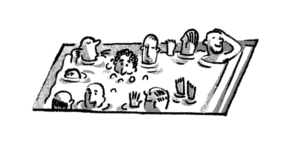
Given the dimensions and density of the stones, each piece probably weighed several hundred kilograms—easily over 1,000 pounds. Who carried or schlepped the 1000 lb. stones? One man per sheyvet? Only with a miracle from the RBSO. Otherwise, these stones would have required a small crane, or at least twelve very strong bodybuilders. Moreover, the Yiddin had to carry them from the Jordan River bed to Har Gerizim and Har Eival, about 60 Mil (one and a half days’ walking distance). And if the day wasn’t long enough for these people, based on Moishe’s instructions -above- whomever was charged with the scribal writings, needed to work like a fiend, and had to be done by nightfall. Well blow me down! How did this taka come together? Let’s all agree that either the RBSO performed yet another miracle to lighten the load, or every Jew assigned to schlepp suddenly became a weightlifting champion.
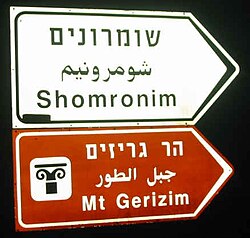
The bottom line: The stones were not sidewalk pebbles. They were “miracle boulders,” designed to impress, intimidate, and—most importantly—carry the words of the heylige Toirah. Ober, what exactly did Moishe mean? What’s pshat in the instructions to write upon them “all” the words of this Toirah?” Was it, and is it possible, to reduce to writing the nearly 80,000 words that are contained in the heylige Toirah onto a few -maybe 12- stones? What exactly were the Yiddin to do? When was this to happen? How many stones were involved? How many scribes were assigned to the project? What shape were these stones? Shoin, these and many more questions are raised by the instructional pisukim.
Nu, as you can only imagine, these passages were the subject of many sagacious discussions and machloikes between many in the heylige Gemora and other places. What were they arguing about? About real pshat in the instructions which can of course lead to some confusion and many interpretations. By way of example only, lest you think that all agree to the shape of the stones, the Abarbanel suggests that the stones were square or rectangular slabs, large enough to inscribe the entire heylige Toirah upon them. Then again, there are some opinions cited in the heylige Gemora stating that the world was flat. Shoin, not every opinion can be correct. Is it a wonder some say the Toirah has 70 faces? And because most of you tune out of this parsha because of the 98 curses -and who can blame you- and because all you know about stones is how to play with them, if you chap, let us learn what a few had to say. Ober first, let us chazir:
Moishe and the elders commanded the people, that upon crossing the Jordan River (Yehoshua would lead them following Moishe’ passing), the very first mitzvah they were to perform was to pick up twelve large stones from the river bed (one stone corresponding to each tribe) and carry them into the Promised Land and start writing. Does everyone agree that there were 12 stones? Of course not! Says the heylige Gemora (Soitah 34a) azoy: There were three sets of stones, each consisting of twelve stones, and not just one. Shoin, whether there were 12 or 36 stones, ver veyst? Let’s go veyter. Once there, they were to take them to Har Gerizim and Har Eival, two mountain tops, construct a Mizbayach (altar) with the stones, and then lime them. Next: They were to write or inscribe them. Write what? Let’s see those words again: The instructions were “and write on them all the words of this Toirah,” ober which words? All the words? Some words? Which words? How many words can fit onto 12 or even 36 stones? How large were the stones and what were they using for writing instruments? So many excellent kashas, none of which you likely recall learning answers to.
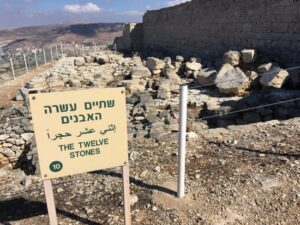
Let the heylige Ois entertain you with a few potential answers. Of course, these are only potential answers because few agree on any one detail, and no one can prove the other right or wrong. Welcome to Toirah Understanding 101. Nu, some are of the opinion that the entire heylige Toirah was to be written or etched into the stones. Others say that’s nothing: The entire heylige Toirah, in all 70 languages of the people, needed to be inscribed so that all of mankind -and maybe also womankind- would be able to read the stones. In how many languages? Some say 70, and some say 71. Why these numbers? Efsher you recall that the RBSO, following the Tower of Bavel incident, dispersed the people into 70 nations each with their own unique language. And the 71st? That would be loshoin koidesh (holy script, our very own language). Of course, this didn’t sit well with others who asked how that was possible. How could 12 or 36 stones fit all this information? Not to worry because says the Ramban azoy: One possibility was that only the 613 mitzvis were written, not the entire Toirah. Another view suggests that taka the entire Toirah, from the first letter in Sefer Bereishis to the very last in Sefer Devorim, was recorded, but how? Is that your business? If the RBSO said to do it, mistama He had a plan even if that plan was miracle-dependent. Can the RBSO not perform miracles? So pshat is like this.
Either the stones were enormous, or it was a neis mamish (miraculous scribal feat) that allowed this to happen. Why not? Didn’t the RBSO perform other miracles that you seem to accept without questioning? You don’t seem to be bothered by the splitting of the sea, twice? That you understand and accept?! You are also good with the ten plagues and all else the RBSO did in a miraculous fashion? What about AI and going back a few years, the facsimile machine? Givaldig and veyter! Ober, why would the RBSO require that His Toirah be etched into stone in 70 or 71 languages? How long would that take? Who knew these languages and which of the non-Jewish nations would care about the RBSO’s Toirah? How many of His own people cared? Ver veyst! In any event, the heylige Gemora does present one logical argument on how this could have happened, but let’s review a few options.
Says the Abarbanel that only the Ten Commandments were etched into the stones. The Rasag is of the opinion that only a list of the 613 commandments was inscribed onto the stones, while the Ralbag suggests that only the blessings and curses appearing in our parsha were engraved. Finally, the Ramban raises the possibility that the entire heylige Toirah was inscribed in stone. Wait, we have two more opinions: One suggests that only the main mitzvis, or the Sefer Devorim recap, were inscribed and the RambaM (Maimonides) says it could have been only the mitzvis relevant to Bnei Noiach (Noahides), so that they would be intelligible to the nations. Of course, those could easily have been reduced to writing in seventy languages and all before nightfall; there were only commanded to observe seven. What really took place? What was written? Ver veyst? None of the many who opine were there to give eyewitness testimony and yet, all have creative ideas. Pick the pshat that talks to you.
How many stones were there? Says the heylige Gemora (Soitah 34a) azoy: There were taka three sets of stones, each consisting of twelve stones, and not just one. That’s 36 stones. The first set contained the words of the Toirah in all languages and was erected by Moishe in Arvos Moi’av (plains of Moiav) when he re-established the covenant that the Yiddin had broken and nullified with the eygel (golden calf) incident. The second set, at the behest of Yehoishua, was placed in the Yarden (Jordan River) itself as the Yiddin crossed over. For what purpose you may be wondering? Says Rabaynu Bechaya, the function of this set was for the Kohanim (priests) who stood their ground holding the Aron (Holy Ark) whilst the people crossed, until the water returned to its original course. They stood on the stones to avoid having to stand in the mud. This makes it unlikely for the Toirah to have been written on them, though in any event, there is no indication that it was. Gishmak. And the third set was initially erected on Har Eival in the form of a Mizbayach, as we explained, and then, after sacrificing on it, they took it apart and carried the stones to Gilgal, where they spent their first night in the holy land, and where they re-erected them. Got all that? One medrish will tell us that at least two miracles occurred in connection with these stones. Ershtens, both mountains, Har Gerizim and Har Eival were a distance of sixty Mil (one and a half days walking distance), yet the Yiddin traveled there, set up the stones, wrote the entire Toirah on them in all seventy-one languages (70 plus the original Toirah language) and went through the entire ceremony described in this parsha and returned, all before nightfall. Just on time for dinner? Of-course, why not? Ober says the Ramban, based on his assumption that the stones were not that gigantic, azoy: The Yiddin were able to write the entire Toirah on them seventy-one times, with all the Tagin (crowns) and that was a miracle too.
And after all that work, where are these stones today? Seemingly, the stones were not designed to serve as permanent monuments. Why not? Ver veyst? Mistama, that’s what the RBSO wanted all along. Says Rav Shamshon Raphael Hirsch: And that’s why the RBSO ordered for the text to be inscribed on a layer of lime. Lime does not withstand the elements as stone does. Moreover, our traditions are not tied to or perpetuated by marble or granite monuments. And the bottom line? In the end, we accept that if the RBSO ordered that His Toirah be etched into stone, be it on the original set which Moishe brought down with the Ten Commandments, or the second replacement set following a shtikel debacle, or on the 12 or 36 stones referenced in our parsha, there must be a good reason. Exactly what that reason was is hotly debated and of course none of our business. He’s the boss! The bottom line: During this time of year as we approach the Rosh Hashono and Yom Kippur, it’s the RBSO asking questions about what we’ve been doing with our own stones, if you chap.
The bottom-line question is this: How in the heylige world did this all happen? Shoin, let’s set the scene:
- The Yiddin cross the Yarden under Yehoshua’s leadership.
- They’re told to take 12 massive stones from the riverbed (one per sheyvet).
- Then — schlepp them up to Har Eval / Har Grizim area.
- Then — coat them with plaster, and inscribe “kol divrei haToirah hazos” — the whole Toirah — and not just once, but according to Chazal, in 70 languages.
- All this — before shkiah!
What? All this had to get done on that very day? Says who? How was this possible? Ober raboyseyee, let us read the instructions mamish as they appear in the text of the heylige Toirah. Says the heylige Toriah (Devorim 27:2–3), azoy: Moishe tells the Yiddin:
“On the day you cross the Jordan… you shall set up large stones, plaster them with lime, and write upon them all the words of this Torah…”
וְהָיָה בְּעָבְרְכֶם אֶת־הַיַּרְדֵּן אֶל־הָאָרֶץ אֲשֶׁר־יְהוָה אֱלֹקיךָ נֹתֵן לָךְ, וַהֲקֵמֹתָ לְךָ אֲבָנִים גְּדֹלוֹת, וְשַׂדְתָּ אֹתָם בַּשִּׂיד.
וְכָתַבְתָּ עֲלֵיהֶן אֵת כָּל־דִּבְרֵי הַתּוֹרָה הַזֹּאת, בְּעָבְרֶךָ, לְמַעַן אֲשֶׁר תָּבוֹא אֶל־הָאָרֶץ אֲשֶׁר־יְהוָה אֱלֹקיךָ נֹתֵן לְךָ, אֶרֶץ זָבַת חָלָב וּדְבַשׁ, כַּאֲשֶׁר דִּבֶּר יְהוָה אֱלֹקֵי אֲבֹתֶיךָ לָךְ.
The key word is “בְּעָבְרְכֶם” — “on the day you cross.” Shoin, from that one word, our holy sages -who happen to specialize in nuances like this- got the idea that it all had to happen immediately, before sunset of that very day. Says Rashi (Devorim 27:2): “On the day you cross… you must do it immediately, the same day.” So happens that the Ramban agrees but suggests maybe it wasn’t literally the entire Toirah — possibly just the commandments and or jut the summaries. Ober the Sifrei says all the words, same day. Now you know?
Efsher you’re all scratching your collective heads and saying that it’s practically impossible. Schlepping boulders, climbing to the top of two mountains some distance apart, erecting them, plastering, inscribing 304,805 words × 70 languages —all in one day by nightfall?! Let’s get real!
What to do about these instructions? Shoin lest you think that we could trap our holy sages who came along and interpreted kimat every word of the heylige Toirah, of course you should be aware that one cannot outwit the brilliance of our sages and other exegetes. Their minds were razor sharp and gave us a few ways out:
One approach is that all this happened on ‘Miracle Time.’ Mic drop! The RBSO suspended natural limits. Time stretched, stones got lighter, quills moved faster and shoin, the project was completed on time as instructed. If all this taka took place in Miracle Mode, as was the splitting the Jordan River (Yarden), avada we can chap that the RBSO gave the Yiddin supernatural strength and speed. In this scenario, the stones “carried themselves” (like the aron in the midbar), the writing was done miraculously, and angelic scribes did the job. Do you think for even a second that malochim (the RBSO’s angels) were not up to the job or the challenge to finish timely? Shame on you! And taka, says the medrish (Tanchuma) that the RBSO sent malochim to do the engraving. The Yiddin plastered, the RBSO published. The maolchim (angels) did the heavy lifting, or heavy carving. Bam. Done.
Alternatively, we can take the approach that when the RBSO said the ‘Whole Toirah’ He meant just the mitzvis, or a digest and taka so say the Ibn Ezra & Rambam. Want more? Here we go! And finally, we can suggest that when the instructions said ‘…on the day…,” they were but symbolic and pshat is azoy: “Before nightfall” doesn’t mean literally that day, but “without delay.” A few exegetes support this theory. The bottom line: Though the requirement for the same day is straight from the posik (“on the day you cross”), and the 70 languages comes from the heylige Gemora in Sotah, we must conclude that either what was written was in fact shortened, or, it was miraculous. Of course, there is always the possibility that they made use of the first ever auto-pen and that the invention dating back to the 1930 was copied if not inspired by the heylige Toirah. Isn’t everything?

On the other hand, let us recall that it might well have been the case that these very near-impossible instructions is what motivated a number of Yiddin to invent the entire schlepping and moving business and that companies like Schleppers and Moishe’s Movers -and many others- were all inspired by our parsha. The RBSO is great!

A gittin Shabbis –
The Heylige Oisvorfer Ruv
Yitz Grossman
Source URL: https://oisvorfer.com/ki-sovoy-2025-the-first-auto-pen/